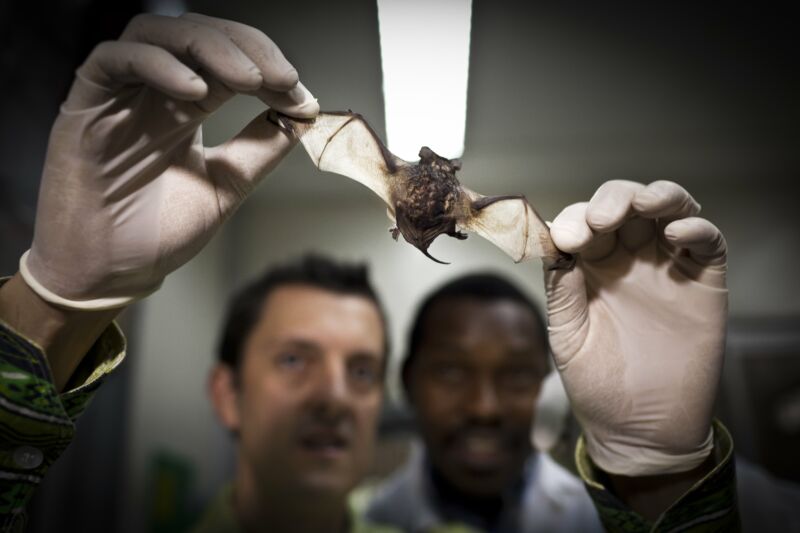The bat-virus détente

Enlarge / Researchers examine a bat as part of their search for dangerous animal pathogens in the Global Viral Forecasting Initiative Lab in Yaounde, Cameroon. (credit: Brent Stirton/Getty Images)
For several weeks in March, Arinjay Banerjee would eat breakfast at 6am and then drive the empty roads of Toronto to a restricted-access lab. Then he'd ready himself for work, donning three layers of gloves, a helmeted mask kitted with an air-purifying respirator, and a surgical-style gown.
The interlocked doors and special filtered ventilation system of the lab, fitted with alarms should air circulation malfunction, are designed to stop outward air flow. After eight hours at the bench, Banerjee would put aside his scrubs and boot covers for sterilization, change out of his work sneakers and return to a basement apartment in the home of a colleague.
The stringent conditions in that Toronto lab-only one level below the most secure in the biosafety hierarchy-were crucial. Banerjee, a virologist, was on a team working to isolate the SARS-CoV-2 virus from one of the first patients in Canada. As the pandemic unfolded, he almost felt safer suited up in the containment lab than he did when out in the world.
Read 60 remaining paragraphs | Comments